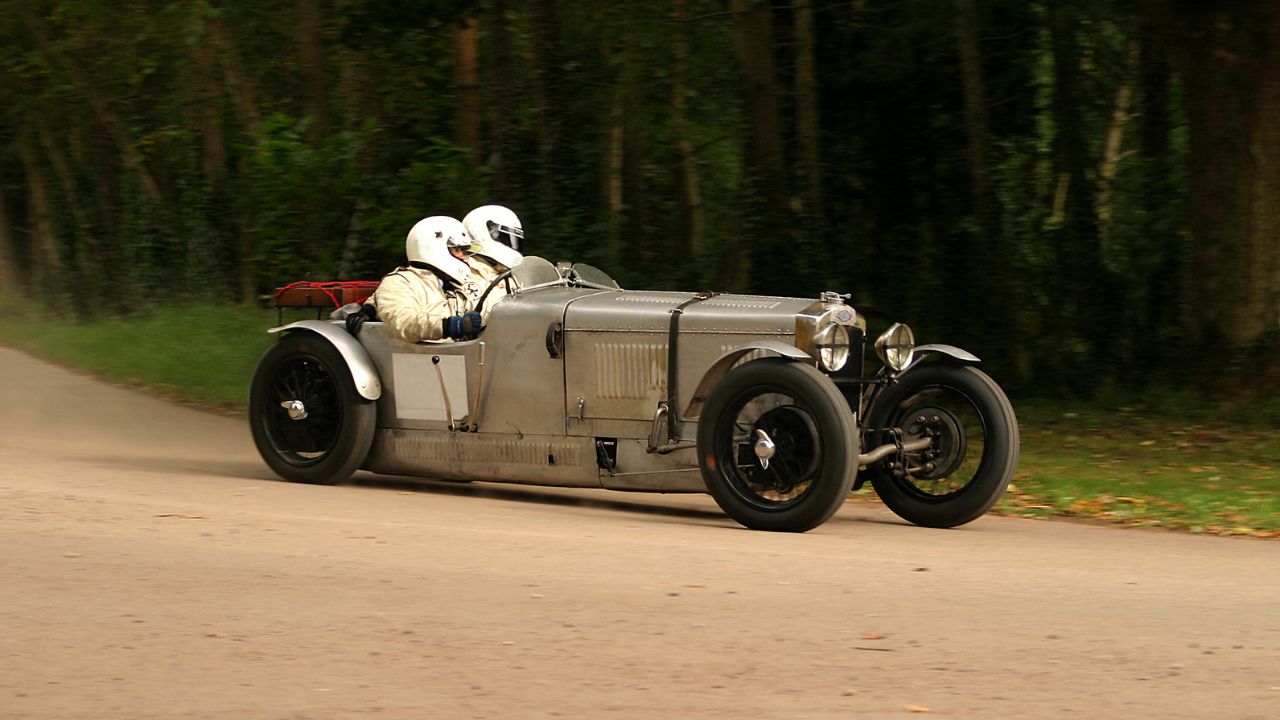
When did Jaguar win Le Mans? In 1956, Ron Flockhart drove Ninian Sanderson in the Jaguar D-Type and won the race. They bested an Aston Martin DB3S driven by Sterling Moss and Peter Collins, as well as a Ferrari 625 LM. How could a Jaguar win Le Mans? Here are some facts and figures about the history of the sport. The Jaguar won Le Mans three times, most notably in 1956.
XJR-12LM is an updated version of the XJR-9, which was released in 1988.
The XJR-9 sports prototype was introduced in 1988. It was the first Jaguar Jaguar ever to win the 24-hour racing race since 1957. This broke a seven-year Porsche streak. The powerful 7.0-liter V12 gave it incredible torque and flexibility. It also provided excellent acceleration. The following video will provide more information about the car. It was imported to YouTube. It might be available in other formats, or on Drivetribe's website.

It featured a 7.0-liter V12
The V12 engine's 7.0-liter displacement was a major improvement over the 6.75-liter V10 in most cars. This engine was revolutionary. Jaguar's XJR-9 was a car that redefined aerodynamics. Although it did not have the same straight line speed as the Porsche 911, the engine was still capable of winning.
It was driven by Sir Stirling Moss
This car was a hit because of many factors, including the fact that Sir Stirling Moss drove it. Moss was a legend in motorsports. His success during the 1950s led several models and variants to the Jaguar C-type including a convertible. Moss also won the Le Mans 24 Hours racing race. He also won a British Grand Prix championship.
It's great in wet weather
Although the XK120 was a light sports car that could withstand long Le Mans runs in wet conditions, it wasn't a contender for a win. William Lyons, head of Jaguar's sports division, and Heynes discussed this issue and decided that a dedicated sports-racing car was required. Lyons was enthusiastic about motorsports, but he was wary that he would put too much stress on his already tight company budget.
Chief Test driver drove it
From 1952 to 1985, the car was driven by Norman Dewis (the legendary Chief Test Driver). His title perfectly described his career. Dewis had the opportunity to race at Le Mans with some of the most famous drivers. He was also able to withstand high-speed crashes, and the demands of racing. During this time, Dewis helped shape the way Jaguar cars were tested and perfected.

It was sponsored in part by SMITHS gauges
Ecurie Ecosse, the national racing team of Scotland, will launch a LM-C automobile in 2021. This car is a tribute to the early successes of Jaguar C-Types during the 1950s. SMITHS gauges from Caerbont Automotive Instruments of Abercrave in South Wales will be part of the car. Jaguar's association to British motorsports is honored by this car, which will include the Sting Ray, the first winning car.
FAQ
How do race car drivers prepare to race?
Most race car drivers spend their time warming up prior to a race.
It involves running their engines for a certain amount of time.
They can start the race when they're ready.
What type of cars are used in racing cars and why?
The most important thing for any race car driver is speed. Speed is what makes them fast. They have to be quick enough to catch up to other drivers but also strong enough to hold on to the lead. This gives them an advantage over the rest of the racers, as they can quickly overtake other drivers at high speeds and pull away from them again when it's not their turn.
The fastest cars are often very light. This allows them to accelerate quickly and gain a lot of speed. However, they also have less power. This limits their ability to travel far in a relatively short time. Therefore, they must use energy efficiently.
Engines power most modern-day racing cars. These are similar to those found in normal passenger vehicles. These engines run on compressed gas instead of petrol. This is because petrol isn't powerful enough to provide enough power to make a car go very fast.
How quickly can a race car accelerate?
A race car's acceleration rate varies depending on its weight.
For example, a lightweight car accelerates more quickly than a heavy car.
Which country hosts the most auto races?
USA - Car races are held in more than 100 countries. USA holds more than 300 car racing events each year.
Which car racing has the most spectators?
The Indianapolis 500 Mile Race has become one of America's most popular spectator events. It attracts more than 400,000 spectators every year.
It will be held at the Indianapolis Motor Speedway, May 30th and 31, respectively.
What types of cars are race car drivers using?
Modern race cars are often powered by engines. These engines look similar to the ones found in passenger cars.
But instead of using petrol, they run on compressed air.
Statistics
- This change may give an improvement of up to 29% fuel efficiency. (en.wikipedia.org)
- Forget the 200-mph battles of the late 1980s; no one, not even McLaren itself, predicted the inimitable F1 would go as fast as it did. (motortrend.com)
- Acceleration is a little gentler (relatively speaking) too, with 0-100km/h taking an estimated 3.1 seconds and 0-200km/h covered in 7.8 seconds. (autosport.com)
- In 2009, the slick tires returned as a part of revisions to the rules for the 2009 season; slicks have no grooves and give up to 18% more contact with the track. (en.wikipedia.org)
- Petty has won 200 NASCAR Cup Series races, a likely unbreakable record, along with a series record seven Cup championships. (frontstretch.com)
External Links
How To
Five of the Fastest Stock Cars for Street Racing in 2022
-
Ford Mustang GT350R, $50k+
The Ford Mustang GT350R Supercar is street-legal. It is powered by a 6.2L engine that generates over 600 horsepower, and 590 lb.ft of torque. Brembo brakes come standard, along with Michelin Pilot Sport Cup 2 tire and 20-inch Pirelli Scorpion Z tires. The interior features leather seats and carbon fiber trim.
-
Chevrolet Corvette C8Z06 - $60k-$80k
The Chevrolet Corvette C8Z07 is a mid-engine sports car built by General Motors. It was revealed for the first time at 2017 Detroit Auto Show. The engine of the car is a naturally-aspirated 8.0L LT4 v8 that produces 650 hp. The car is approximately 2,800 pounds in weight.
-
Dodge Challenger SRT Hellcat Widebody It is based on the third-generation Charger platform introduced in 2016. The wide body variant is produced since 2018. The 707hp supercharged, 6.2L HEMI-V8 engine makes it the fastest production vehicle worldwide.
-
BMW M760Li xDrive – £140k-$180k
The BMW 760Li, a high performance luxury sedan made by BMW AG, is a BMW 760Li. In 2011, the second generation 760Li was released. The car is powered with a twin-turbocharged petrol engine of 4.4L L8 that produces 750 hp, 800 Nm of peak power. It can travel from 0 to 60 mph (0-100 km/h), in 3.9 seconds, and reach its maximum speed of 196 mph (315km/h).
-
Porsche 911 Turbo S $160k to $200k
The Porsche 911 Turbo S high-performance model of the 911 roadster is now available. The 3.8L turbodiesel flat-six turbodiesel motor produces 550 hp. It is paired with a PDK twin-clutch transmission. It can reach speeds of 197 mph (317 km/h) and accelerates from 0 to 62 mph (100 km/h).